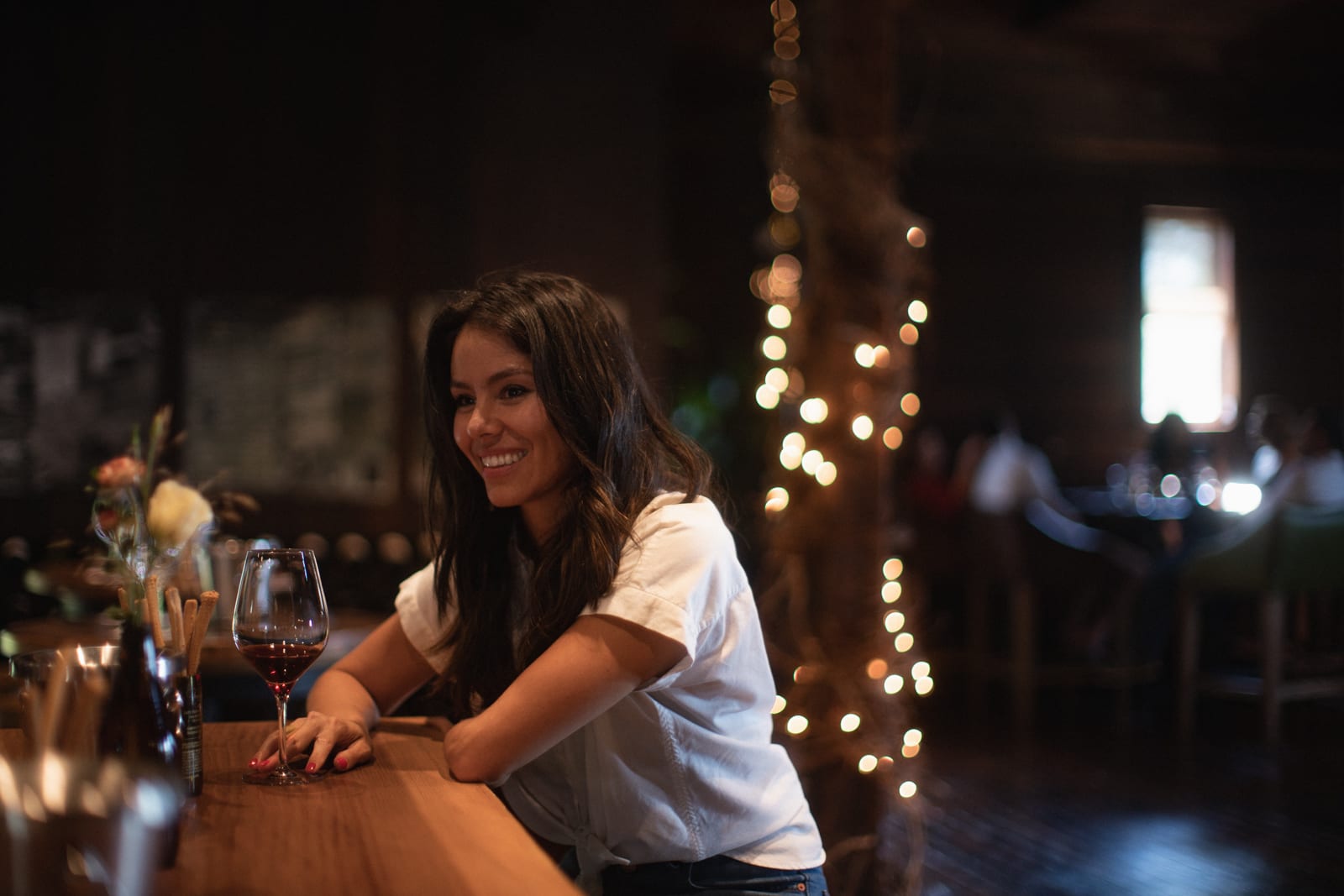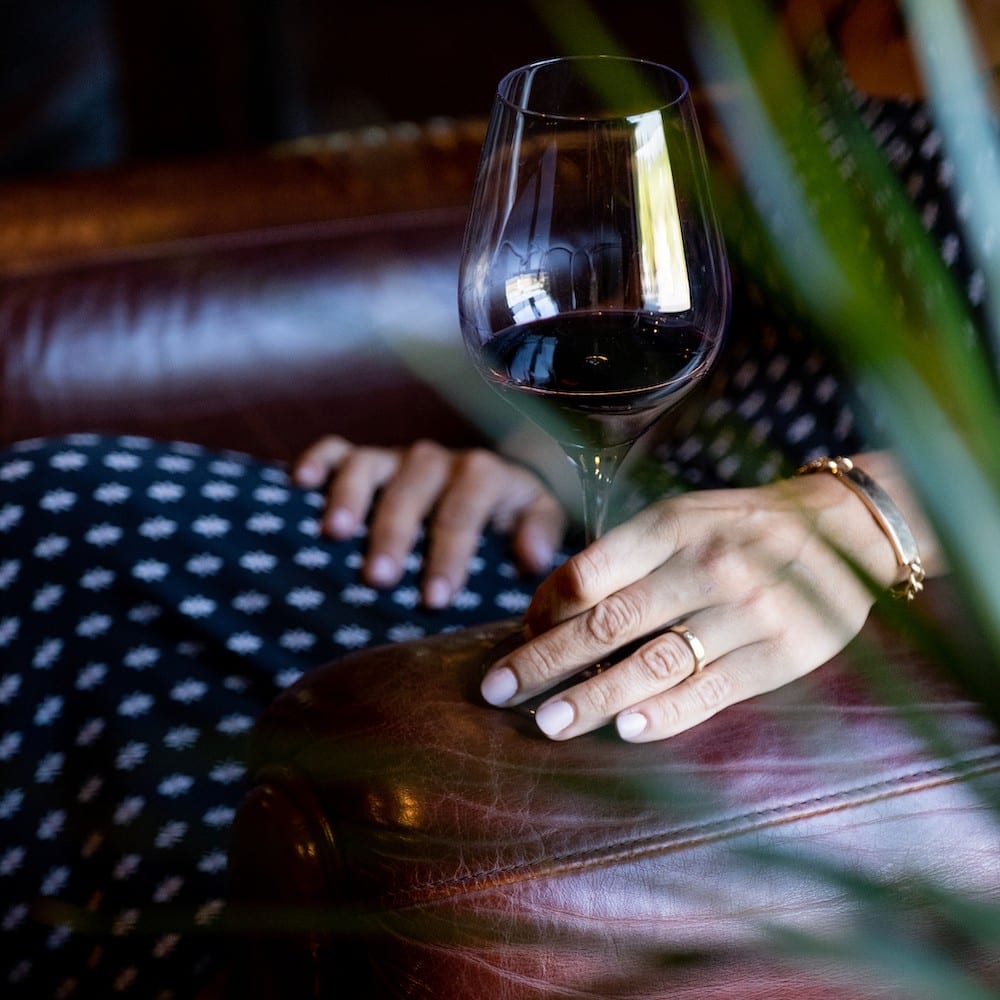7 Quick Tips To Taste Wine Like A Pro
- The Latest,
- Wine
January 7, 2021
At Trefethen, we want you to enjoy the experience of tasting and discover wines that you thoroughly enjoy! To help you, we are sharing a few simple methods that can help you taste wine like a pro, improve your palate, and enhance your wine tasting experience.
Tip #1: Trust Yourself!
Don’t be scared or intimidated by what you think you should know or like. Wine tasting is supposed to be relaxing and interesting, so just have fun! Even for the experts, every wine tasting is an opportunity to learn something new. A useful tip is to try not to listen to what other tasters around you say. The art of wine tasting is actually a very personal experience, as everyone identifies aromas differently. Try to put your tasting blinders on and focus on what YOU smell and taste first, ignoring other people’s opinions (this holds true to whatever level of experience you may have).
Tip #2: A Glass Act
The glass you use and how you hold it can affect the wine tasting experience. Typically, your glass will come with a stem. This is where you should hold it. Leaving your hand on the bowl can heat up the wine, derailing it from the optimal serving temperature. The most important aspect when it comes to your chosen glass is that it should have a rounded bowl (to aid swirling the wine to release aromas) and inward-sloping walls (to concentrate those aromas).
While stemless glasses may be trendy, they’re actually not ideal to taste wine. Glassware makes a big difference, so try a little experiment at home and taste the same wine out of different glasses and see which one you like best! Which glass brings out more aroma, or which delivers the wine onto the perfect point of your palate?

Every wine tasting is an opportunity to learn something new.
Tip #3: Love At First Sight?
Wine tasting makes use of three key senses – sight, smell, and taste. So, start at the top – eyes first, then nose, then mouth.
To be a pro, tilt your wine at a 45-degree angle and hold your glass up to the light, or against a white piece of paper. This will help you assess the color of the wine. The color can tell you a lot about what you’re about to taste. Okay, yes, whether it is going to be a red, white, rosé, or sparkling wine is a pretty obvious one, but there is more to it. White wines gain color as they age, shifting from delicate lemon and gold to darker caramel. By contrast, reds lose color and intensity with age, as they progress from purple to ruby to deep tawny.
In addition, keep an eye out for opacity (if it’s hazy there might be a fault) and viscosity (the wine’s consistency). Typically, a dessert wine has a higher viscosity as the high level of sugar makes the wine texture more thick and syrupy.
Tip #4: Take A Swirl
A large part of the pleasure gained from tasting wine comes from the aromas. To release the full aromas into the glass, you should swirl the liquid – especially the first time you are about to smell your wine.
Hold your glass by the stem (in the air or on a surface) and swirl the wine slowly at first until you have the hang of the motion. It takes a while to get the hang of this (trust us!), but at least try so that you aerate your wine to help bring out the best possible flavors. We suggest practicing swirling with white wine, just in case you get too excited and it ends up spilling over the top of the glass!

To release the full aromas into the glass, you should swirl the liquid – especially the first time you are about to smell your wine.
Tip #5: It’s Okay To Stick Your Nose In It
We encourage everyone to spend a little more time smelling wines – aromas are incredible. They can trigger memories, transporting you to another time or place, be it your grandmother’s kitchen or a special vacation.Many people believe that the greatest joy in wine tasting is the aroma. So go ahead: stick your nose right into the glass, rest it on the rim and take a long sniff!
You can really gain so much information using your sense of smell – the intensity of the aroma, the development (i.e. how the aroma changes subtly over time), and maybe even the grape varietal (yes, with a bit of practice you’ll pick up that a Cabernet Sauvignon smells quite distinct from a Pinot Noir). Close your eyes. What do you smell? If you smell the wine, you’re off to a good start!
After taking a good long whiff, the first thing you may want to do is reflect upon what it reminds you of. Is it fruity? Earthy? Floral? Or maybe it’s more leathery and woodsy? The smells may not be so obvious to start, so it will help to choose two different wines and compare them.
Tip #6: The Art of Retroflection
Now for the fun part: take a sip! Before you swallow, let the wine slide across your tongue from front to back and side to side. Notice as many sensations as you can. This “swooshing” in your mouth is called retroflection.
When it comes to taste, our tongues can detect much more than just salty, sour, sweet, or bitter. Your tongue can also perceive wine’s texture, such as a higher-alcohol or dessert wine. We also can detect tannins with our tongue – one of the things that make your mouth pucker. Ultimately, the reason you’re swirling the wine in your mouth is to get the full experience, combining the aromas, flavors, and textures.
Tip #7: Don’t Forget To Spit!
Here’s the one tip you might want to forget. If you are tasting a number of wines, our top tip is to have a vessel called a spittoon handy for you to spit out the wine instead of swallowing. This is what we do to keep tasting and working all day at the winery but if you are tasting fine wines at home, we understand that you may be more inclined to actually drink them!
And there you have it. 7 quick tips to help you with the wine tasting protocol that we supposedly all know but never get taught. We’d love your feedback and hope that this comes in handy next time you’re tasting at home or visiting us here at Trefethen Family Vineyards.